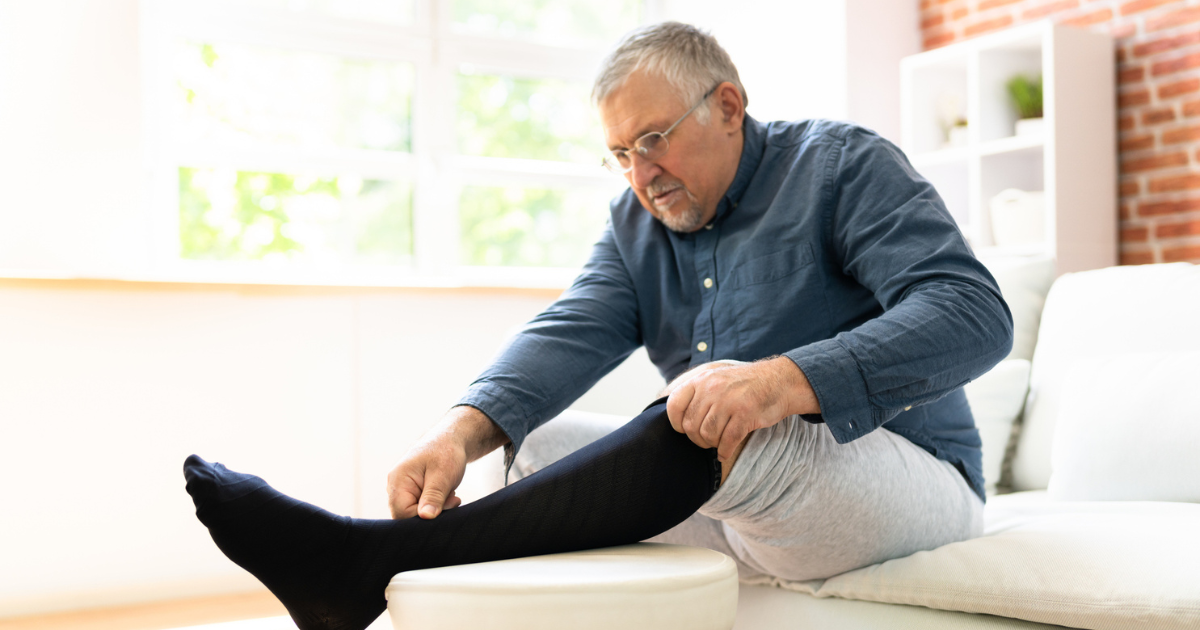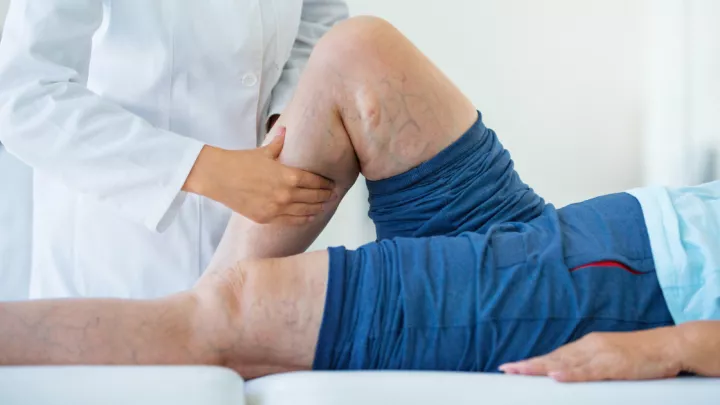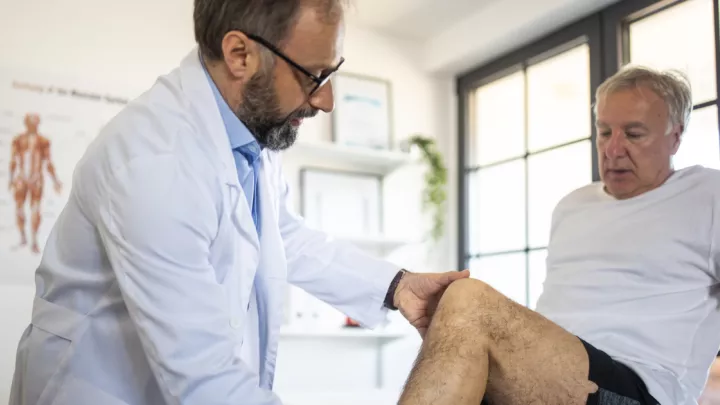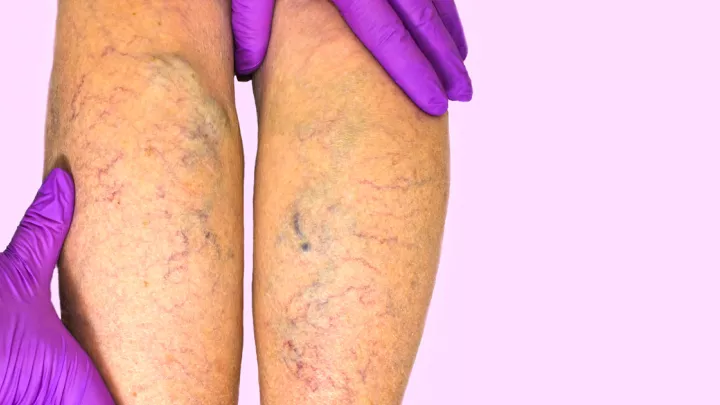What is deep vein thrombosis, and how is it treated?

Deep vein thrombosis, or DVT, is a blood clot in a deep vein. Most often occurring in the legs, these clots can also occur less commonly in the arm, under the clavicle or in the belly. DVT occurs in 1 in 1,000 people up to age 45 and 6 in 1,000 adults up to age 80.
DVT differs from superficial vein thrombosis (SVT) in that SVT occurs near the surface. Superficial veins are located between the skin and muscle in contrast to deep veins, which are surrounded by muscle and often larger in size.
In the short term, patients with a DVT may suffer a pulmonary embolism. Occurring when a DVT travels to the lung, a pulmonary embolism may be found by accident or in patients with chest pain and can be life-threatening. More commonly, however, patients who have had a DVT can develop post-thrombotic syndrome. This occurs when the DVT results in damage to the vein, resulting in long-term swelling, pain, or sores.
What does DVT feel like, and who is at risk?
DVT symptoms can range from no symptoms to lower extremity swelling, pain, or color changes that may occur slowly or rapidly. Additionally, symptoms around the affected area may include:
- Inflammation (swelling).
- Pain when lying down or moving the calf or foot up and down.
- Skin changes or hyperpigmentation.
- Wounds, especially on the legs.
“Patients with DVTs in the lower extremities are at higher risk of complications,” says vascular surgeon Jason Cook, MD. “This is because the leg veins are larger. If a larger clot travels to the heart or lungs, it’s more likely to do damage.”
The risk of developing DVT is higher for people who:
- Have a family history of blood clotting problems.
- Have a genetic predisposition.
- Have had prior blood clots.
- Are immobile due to a medical condition.
- Are inactive due to recovery from an injury or surgery.
- Sit for long periods at work or during travel.
Other risk factors include people with obesity, active cancer, pregnancy or taking birth control pills or hormone replacement therapy.
How is DVT treated?
DVT treatment depends on age, health history, current health status, clot location, and extent of clot, among other factors. Treatments are effective, so if you are experiencing symptoms, talk with your primary care doctor, who may order blood tests or an ultrasound.
“The primary treatment for DVT is using anticoagulation medication (blood thinners),” says Dr. Cook. “Anticoagulation doesn’t melt the clot. Your body does that. What an anticoagulation does is help your body prevent the clot from growing.”
Treatments may include:
Blood thinner (anti-coagulant) medication.
Clot busters, or thrombolytic (TPA) medications, are used in the vein to break up clots and are used in the hospital.
Mechanical thrombectomy has become a mainstay of therapy for people with extensive blood clotting issues. A device is placed in the vein to break up and remove clots and is used in addition to blood thinners. The procedure takes less than an hour, and patients typically go home the next day.
For patients who cannot use other treatments, an interior vena cava filter (IVC) can be placed temporarily or permanently in the belly. While these do not prevent clots from forming, they can help prevent them from traveling to the chest.
Does DVT go away on its own?
“DVT will not go away without blood thinners,” says Dr. Cook. “Once the body forms a clot, it usually propagates without treatment. With treatment, clots can get smaller over time.”
How to avoid DVT
Muscles surround the veins, so keeping these muscles contracting and relaxing through movement is the most significant way to prevent DVT.
Share any history of blood clots with your surgical team to lower the risk of reoccurrence if you need surgery for something unrelated.
If immobile or recovering from injury or surgery:
- Wiggle the toes and move the ankles and legs regularly.
- Get up and move around as soon as possible.
- Sequential compression device (SCD) or intermittent pneumatic compression (IPC) may be helpful after surgery.
- Wear elastic or compression stockings as your doctor has directed.
During prolonged sitting with work or travel:
Walk around about every hour and walk a little.
Move your legs, ankles and toes while seated.
Wear loose clothing.
Limit alcohol.
Stay hydrated with water.







